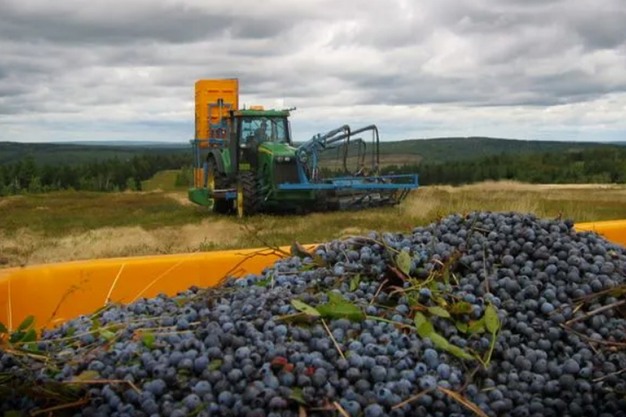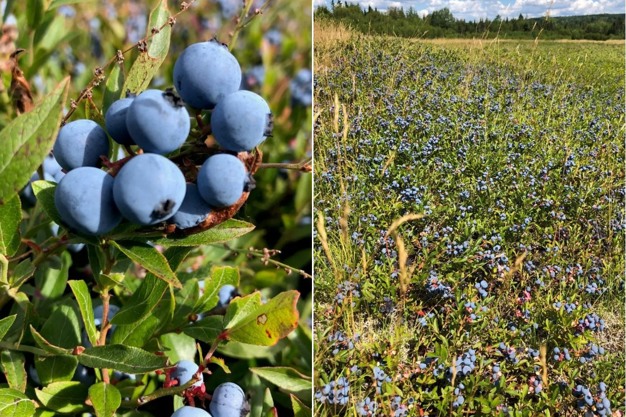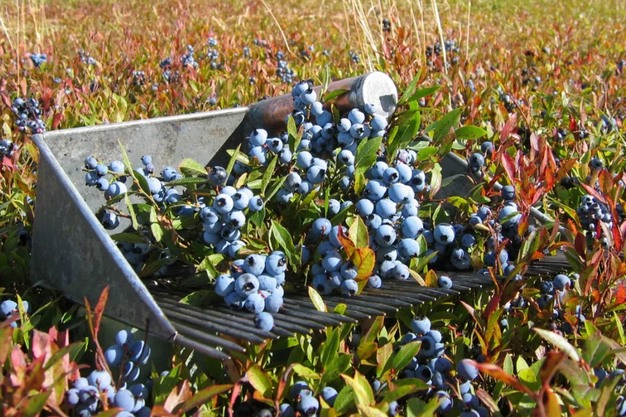While Nova Scotia wild blueberries are a unique crop, it seems the challenges ahead for that industry are similar to what growers across the country are experiencing.

In the eastern Canadian province, commercially wild blueberry production traces back to the late 1960s when it moved into individual quick freezing (IQF) production. “In commercial production, our industry is still relatively young but we’re modernizing quickly,” says Peter Burgess, executive director for the Wild Blueberry Producers Association of Nova Scotia.
That starts with automation. “Because it’s a wild crop, we don’t plant the crop at all. It’s also a single-pass harvest so we’re trying to modernize our harvesting equipment,” says Burgess. “We’re picking 18,000 acres in four weeks so getting the skilled labor to do that has been a challenge.
Automating harvesting
|That means it’s working on adapting auto-steer systems for harvesting. “Doing that at .7 mph on hilly, less than level fields becomes a technical challenge and we’re getting close to automated harvesting that’s going to allow people to harvest effectively,” says Burgess.
Meanwhile, the industry is also contending with climate change. “We’re running into more extreme weather conditions which is affecting soft fruit crops across the country whether it’s not enough rain or too much rain or too much heat,” Burgess says, adding that what’s unique in Nova Scotia is its number of perennial weeds native to its crop that’s another battle for growers on top of that.
Excess rain this year was the greatest challenge for wild blueberry growers in Nova Scotia. While wild blueberries are a fairly resilient plant, it made basic maintenance challenging. “Even at harvest, the soils were so saturated that our equipment was sinking into the fields,” says Burgess. “You also can’t pick in wet conditions because it reduces harvest efficiency and fruit quality.”

The impact of extreme cold
Probably the biggest climate challenge though is extreme cold. Earlier this year for example, in February, an approximate 36-hour “Polar Vortex” hit Nova Scotia and dropped temperatures down to -26 to -29 degrees Celsius on a crop that had very little snow cover. “On fields that were sloped in a particular direction and higher elevation fields, when the buds started opening, instead of seeing five to six flowers per stem, you would see one or two,” says Burgess. “Some of those flowers, even though they were loaded with pollinators, didn’t get pollinated. So we had some fields that were 50-60 percent down from a typical yield and then a field two kilometers away that was flat and had a very good yield.”
Bloom time is also happening earlier now--Burgess says it’s two weeks earlier now than it was 20 years ago. “Though you still have risks of springtime frosts,” he says,
On the other end of the season, there used to be concerns over frosts the first week of September--something that’s a rarity now. “In some aspects, we have a longer growing season now and it allows more carbohydrates to go into the root system,” says Burgess. “So we tend to have more growth. That does help for a healthier plant in the fall so some things are happening that are better and others that aren’t so good.”

Harvest window for wild blueberries
Like blueberry production across the country, mid-August is the start of harvest for Nova Scotia wild blueberries, though the province likely has the widest range of a harvest window. “Southwest Nova Scotia is on par with Maine in heat units and developmental stage but then once you get up into Cape Breton, it’s one of the last places to pick,” Burgess says, noting that harvest runs for about five weeks. (Though the bulk of harvest runs through August 15th to the first week in September.)
Out of the fields and into the processing market, there’s another challenge for the industry. The wild blueberry industry is largely an ingredient market for processors on the world market. “World economies and supply and demand of frozen food drastically impact our price,” says Burgess, noting that farm gate pricing this past year was softer. “There are a lot of growers struggling because of that for more reasons than just that. We’re dealing with the blueberry market around the world so inflation, increasing borrowing costs and the supply of blueberries in Europe all impacted consumers' buying habits and growers are struggling right now.”
Looking ahead though, with less blueberry crop harvested this year, it’s expected that there’s going to be less inventory going into processing in 2024. “Our industry’s always been cyclical but the peaks and valleys are very different. We get very low and we get very high now and that’s a challenge in cash flow,” he says. “We’re confident it’s going to turn around. It’s just trying to find ways to help the individual grower get through to the next time.”
 For more information:
For more information:
Peter Burgess
Wild Blueberry Producers Association of Nova Scotia
Tel: +1 (902) 899-6253 (cell)
[email protected]
https://nswildblueberries.com/
